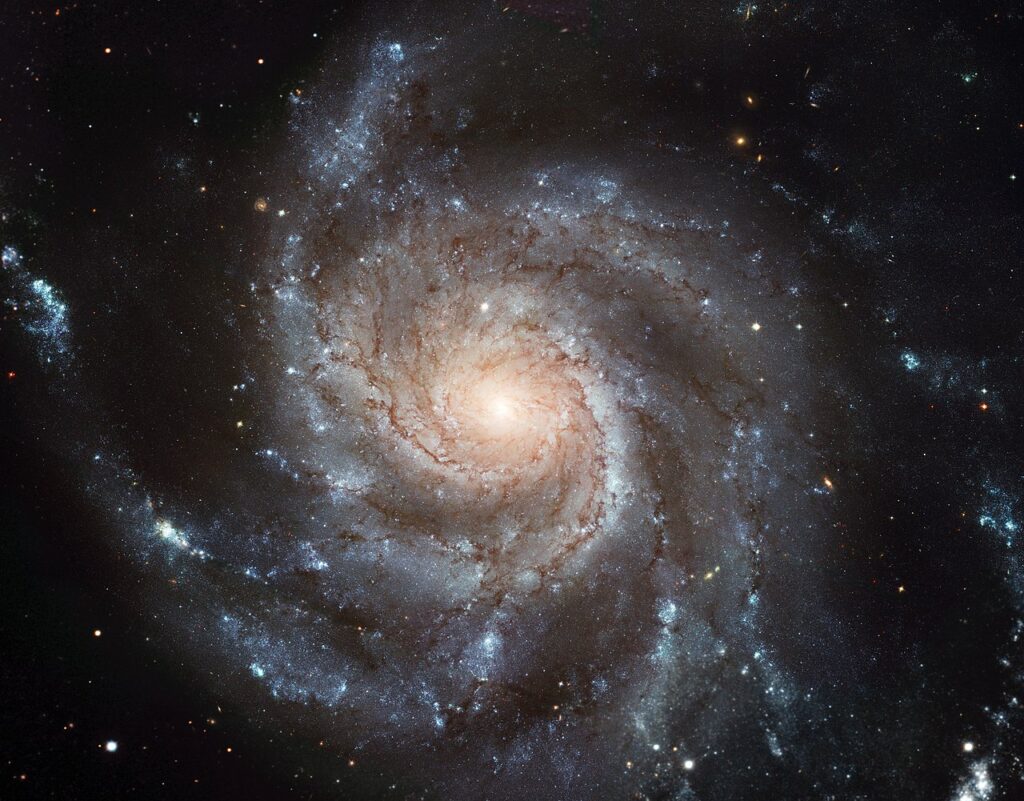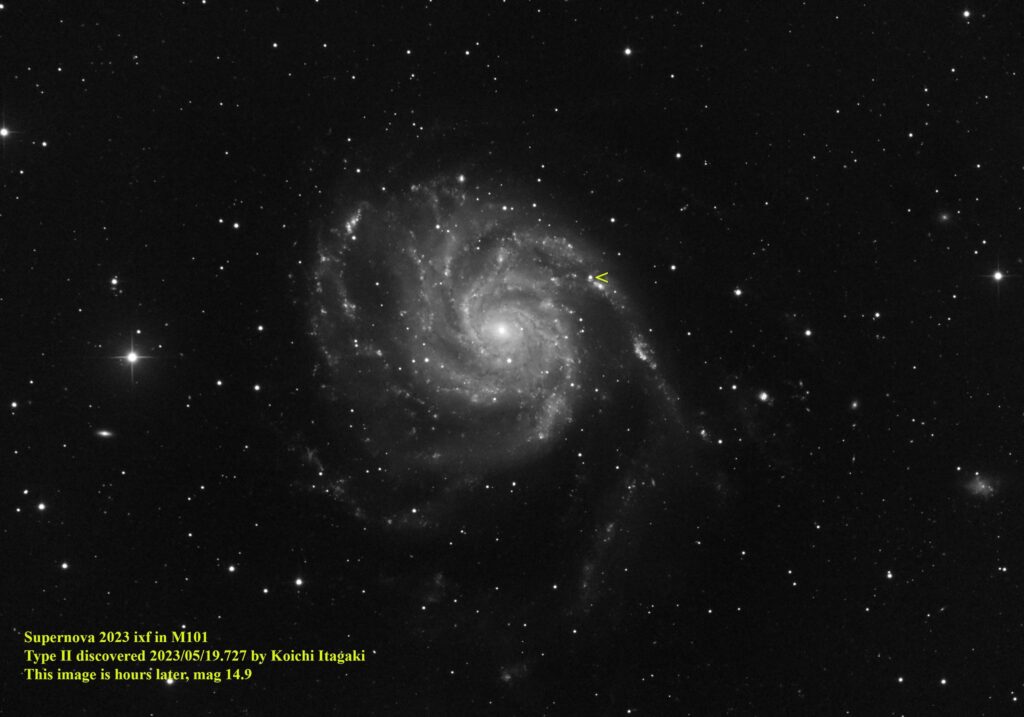Astronomers have discovered a new supernova. It flared up in the galaxy M101. This is the closest supernova to Earth in the last decade.
Supernova in the Pinwheel Galaxy
The galaxy M101 is located at a distance of 21 million light-years. In the earthly sky, it is located near the end of the handle of the Ursa Major. Like our Milky Way, M101 is a spiral galaxy. Due to its characteristic shape, astronomers also call it the Pinwheel Galaxy.

M101 demonstrates high activity. Since the beginning of the XX century, scientists have observed four supernovae in it. The last of them appeared in 2011. It was formed as a result of a thermonuclear explosion of a white dwarf that exceeded its mass limit. Now this list has increased to five. On May 19, Japanese astronomer Koichi Itagaki discovered a new supernova in the Pinwheel Galaxy. It received the designation SN 2023ixf.
The brightest supernova of the XXI century
The supernova found is of great interest to astronomers for several reasons. Firstly, this is the closest similar event to Earth in the last decade. Secondly, it is much brighter than the previous supernova; it broke out in 2011. This can be explained by the fact that SN 2023ixf was formed as a result of the collapse of the core of a giant star.

The brilliance of SN 2023ixf still continues to increase. At the time of registration, the apparent magnitude of SN 2023ixf was 14.9. According to astronomers, by the end of May it may increase to 11. This means that the supernova will be available for observations even with relatively small telescopes.
Does a supernova pose a danger to Earth?
Separately, we note that the explosion in the Pinwheel Galaxy does not pose any danger to the Earth. Recall that it is located at a distance of 21 million light-years from our planet, while the radius of the life-threatening zone in such events is about a hundred light-years.

It is also worth saying that despite the fact that SN 2023ixf is the closest supernova in decades, it will not be possible to see it with the naked eye. The last supernova that could be observed in the Earth’s sky without a telescope flared up in 1987. At the same time, it was not in the Milky Way, but in the galaxy of the Large Magellanic Cloud.
According to https://earthsky.org
Follow us on Twitter to get the most interesting space news in time
https://twitter.com/ust_magazine

